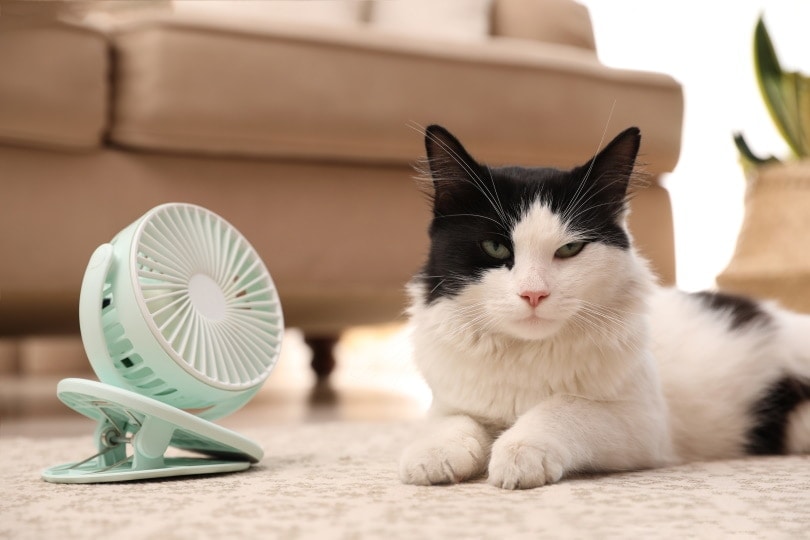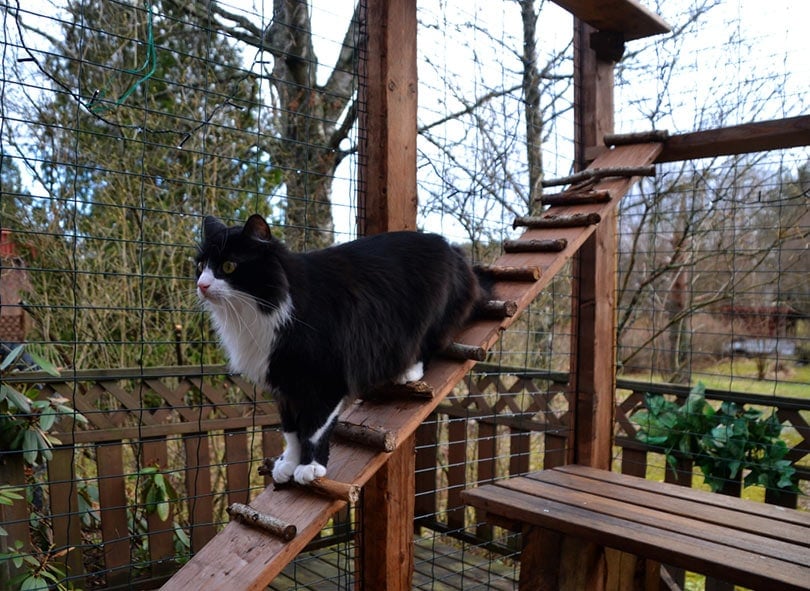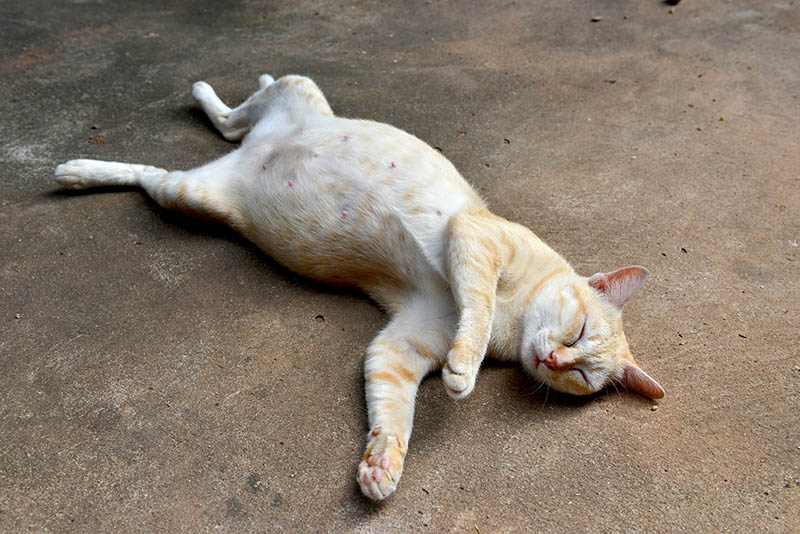Are Persian Cats Hypoallergenic? What You Should Know!

Updated on
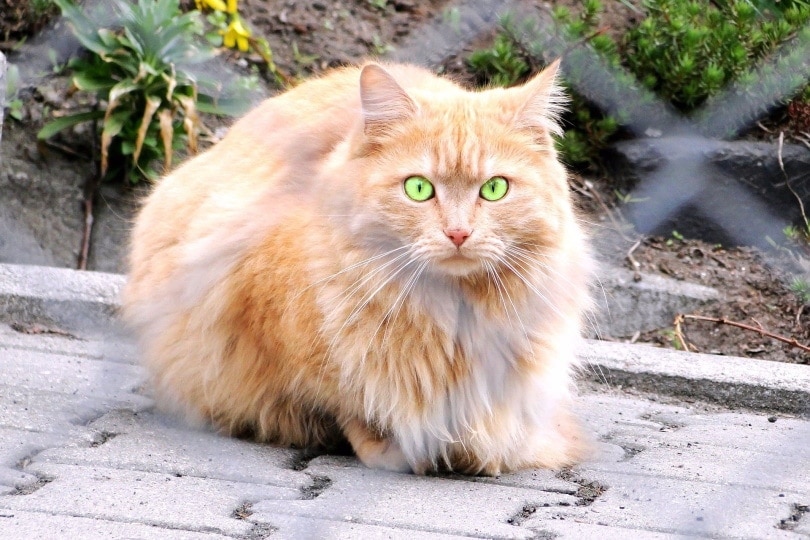
If you’d love to own a cat but start sneezing or sniffing as soon as a friend’s cat approaches you, then you might be looking into hypoallergenic cat breeds. Perhaps you’ve fallen in love with the charismatic Persian breed and are hoping that they’re classed as hypoallergenic. The short answer is no, the Persian isn’t considered a hypoallergenic breed.
Let’s find out why in more detail.
What Causes Cat Allergies?
To understand why the Persian cat breed isn’t classed as hypoallergenic, we first need to look at exactly what causes cat allergies in the first place. Many people think that allergies are caused by a cat’s fur, but they’re not.
- Dander (dead skin)
- Saliva
- Urine
These all contain a protein known as Fel d 1, and it’s this that triggers an allergic reaction. When someone has an allergic reaction, their immune system mistakes these proteins for a dangerous substance, like a virus or bacteria, and attacks them. The signs of an allergy are the evidence that your body is attacking these proteins.
As your cat sheds their dead skin cells, cleans themselves, or uses their litter tray, these proteins disperse into the surrounding environment. They can become airborne and settle on soft furnishings and bedding. Any time a cat allergy sufferer comes along, they will inhale these proteins and their body will negatively react to them.
Cat allergies are caused by a different protein than dog allergies, so you can be allergic to one animal and not the other. In the U.S., cat allergies affect twice as many people as dog allergies.
It’s been found that unneutered male cats produce the highest levels of Fel d 1. Female cats and neutered male cats produce approximately the same amount. With female cats, it doesn’t make a difference if they’ve been spayed, they still produce similar levels. Kittens produce the least Fel d 1.
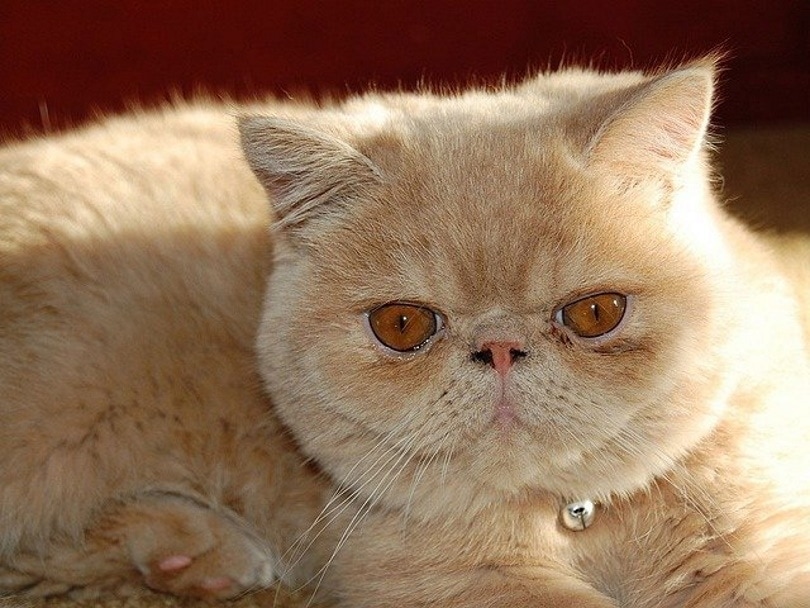
Persian Cats & Allergies
Persian cats aren’t hypoallergenic. While their long coat isn’t necessarily a factor here, they can shed more dander than some other breeds. Long-haired cats can spend more time grooming themselves than short-haired breeds, and this can release more dander and saliva into the environment, which can trigger allergies as a result.
Are Any Cat Breeds Truly Hypoallergenic?
Sadly, the answer to this question is no. Certain cat breeds, especially hairless ones like the Sphynx, are sometimes advertised as hypoallergenic and, therefore, a great choice for allergy sufferers who still want to own a cat.
But the proteins in a cat’s dander, urine, and saliva are what actually trigger an allergic reaction, not their fur. So, hairless breeds aren’t going to be more suitable for allergy sufferers than any other breed.
It’s thought that some cat breeds may produce less of the Fel d 1 protein that causes allergies than other breeds. Research has found that the Siberian Cat may be one example of a breed that has a lower allergy risk, but this isn’t conclusive.
Other breeds may be called low allergy or hypoallergenic, but the truth is that unless there’s scientific research to back that claim up, it’s unlikely to be the case.
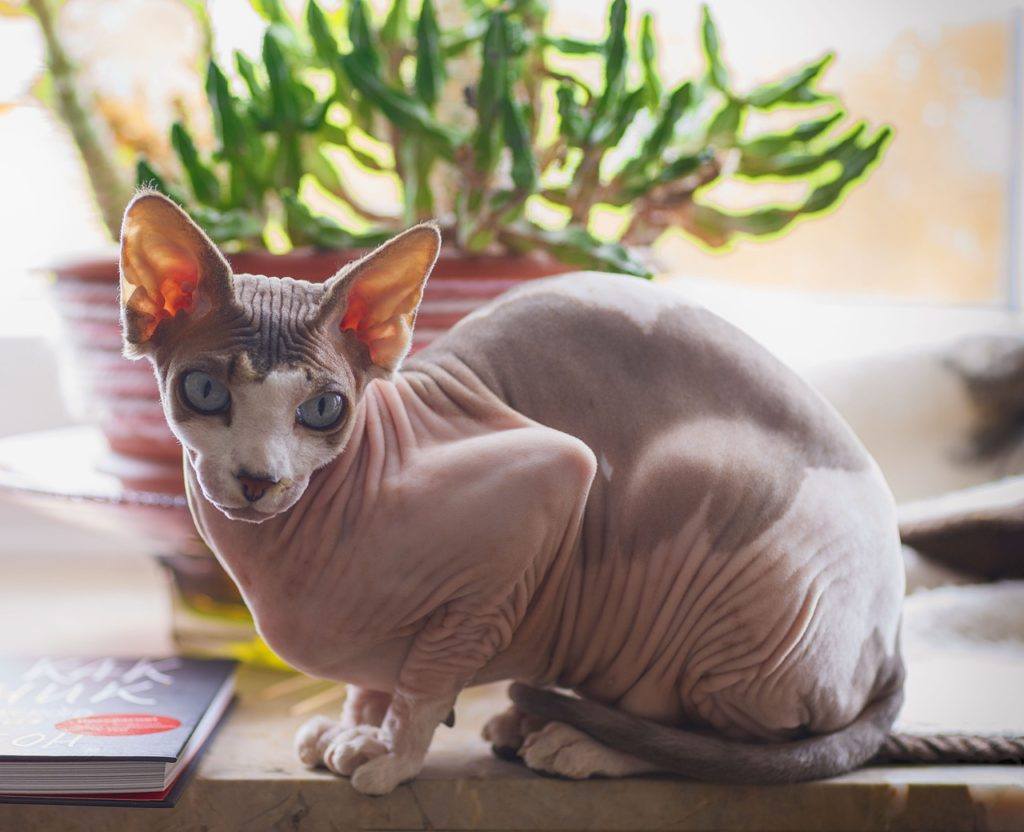
How to Reduce Cat Allergies
If you already have a Persian cat and are trying to cope with allergies, the good news is that there are a few different steps that you can take to keep allergies at a low level.
- Regular grooming will help remove shedding hair and dander. This means it’s less likely to be shed around the house.
- This can reduce the amount of dander, which in the Persian breed, can be significant. If you don’t want to groom or bathe your cat yourself, book them for regular sessions with a groomer.
- Regular cleaning of your house using a vacuum cleaner with a HEPA filter will remove as any allergens from your home as possible. Make sure to vacuum soft furnishings, curtains, and even the walls! Take note of anywhere your cat spends most of their time, and pay particular attention to those areas.
- Use an air purifier. Some air purifiers with HEPA filters can remove airborne allergens.
- Restrict access. You might love to sleep with your cat on the bed, but it won’t do your allergies any good. Try to keep cats out of the bedroom, or restrict their access to downstairs only.
- Wash your cat’s bed. Dander and allergens build up in your cat’s bed quickly. Make sure to wash their beds at least twice a month.
Signs of Cat Allergies
- Red and itchy eyes
- Coughing
- Rash or hives
- Sneezing
- Runny or itchy nose
- Red and irritated skin
- Asthma
If you develop any of these signs around cats, you might be allergic. Your doctor may want to run tests to check that your allergies are definitely cat-related.
Conclusion: Persian Cats Are Not Hypoallergenic
Due to their tendency to shed excessive dander and hair, Persian cats are definitely not considered hypoallergenic. But in all honesty, that title should not be given to any cat breed. As yet, there are no cat breeds considered truly hypoallergenic.
If you or a family member do develop allergies or if you have them already but desperately want to add a Persian cat to your home, there are steps that you can take to minimize the number of allergens in your house.
This way, you can sneeze less and still enjoy life with your cat — though having them sleep on the same pillow is still probably off limits!
If you have a Persian cat and want to keep your allergies at bay, check out our top picks for best cat beds of the year to get your kitty a space they love and keep the dander further from you.
Related Persian Articles:
Featured Image Credit: Krzysztof Niewolny, Pixabay


